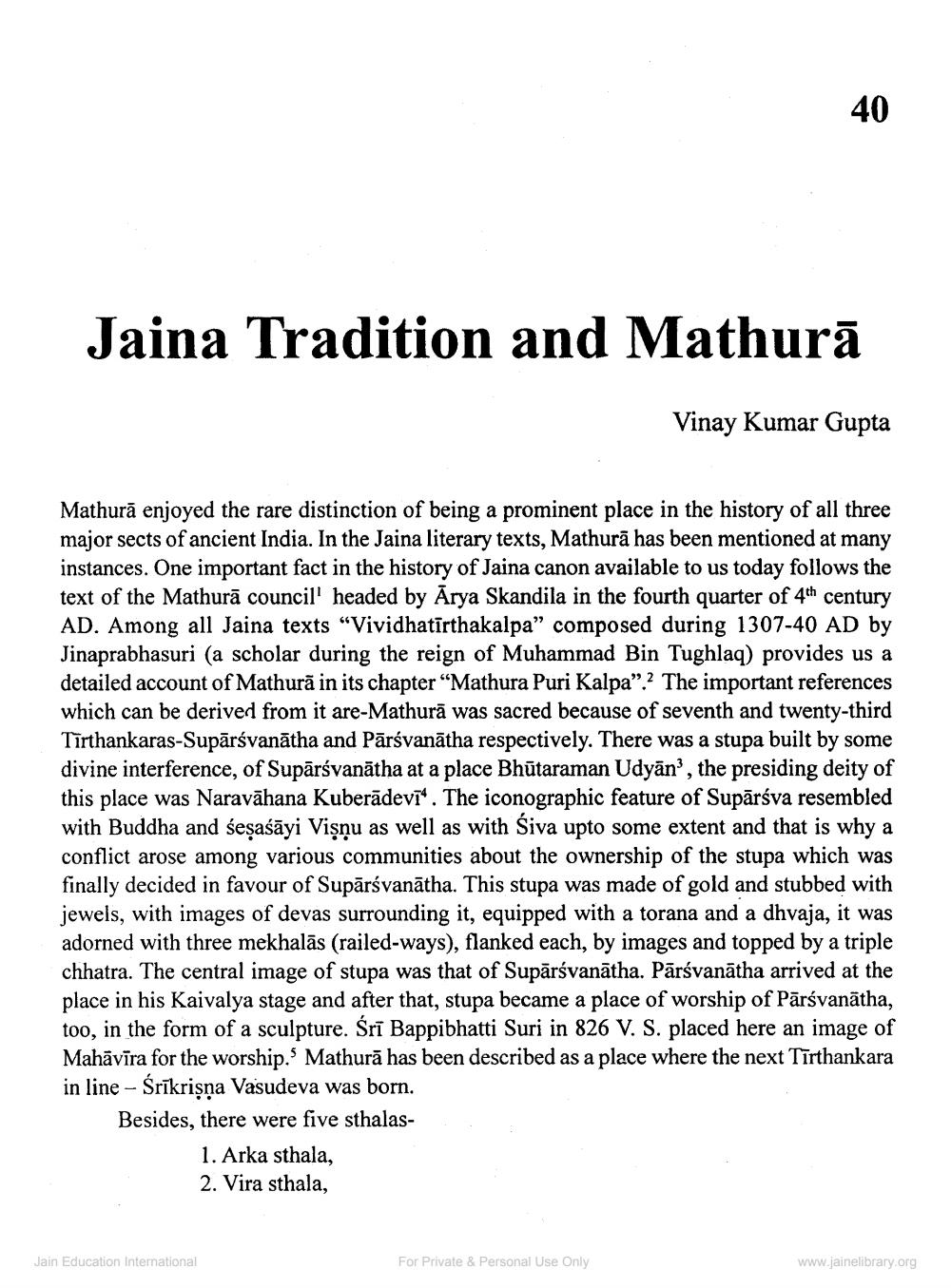________________
Jaina Tradition and Mathurā
Vinay Kumar Gupta
Mathurā enjoyed the rare distinction of being a prominent place in the history of all three major sects of ancient India. In the Jaina literary texts, Mathurā has been mentioned at many instances. One important fact in the history of Jaina canon available to us today follows the text of the Mathurā council' headed by Arya Skandila in the fourth quarter of 4th century AD. Among all Jaina texts "Vividhatīrthakalpa" composed during 1307-40 AD by Jinaprabhasuri (a scholar during the reign of Muhammad Bin Tughlaq) provides us a detailed account of Mathură in its chapter "Mathura Puri Kalpa”.? The important references which can be derived from it are-Mathurā was sacred because of seventh and twenty-third Tīrthankaras-Supārsvanātha and Pārsvanātha respectively. There was a stupa built by some divine interference, of Supārsvanātha at a place Bhūtaraman Udyān”, the presiding deity of this place was Naravāhana Kuberādevī. The iconographic feature of Supārśva resembled with Buddha and sesaśāyi Visnu as well as with Siva upto some extent and that is why a conflict arose among various communities about the ownership of the stupa which was finally decided in favour of Supārsvanātha. This stupa was made of gold and stubbed with jewels, with images of devas surrounding it, equipped with a torana and a dhvaja, it was adorned with three mekhalās (railed-ways), flanked each, by images and topped by a triple chhatra. The central image of stupa was that of Supārsvanātha. Pārsvanātha arrived at the place in his Kaivalya stage and after that, stupa became a place of worship of Pārsvanātha, too, in the form of a sculpture. Śrī Bappibhatti Suri in 826 V. S. placed here an image of Mahāvīra for the worship. Mathurā has been described as a place where the next Tīrthankara in line - Śrīkrisna Vasudeva was born. Besides, there were five sthalas
1. Arka sthala, 2. Vira sthala,
Jain Education International
For Private & Personal Use Only
www.jainelibrary.org




